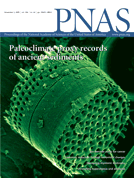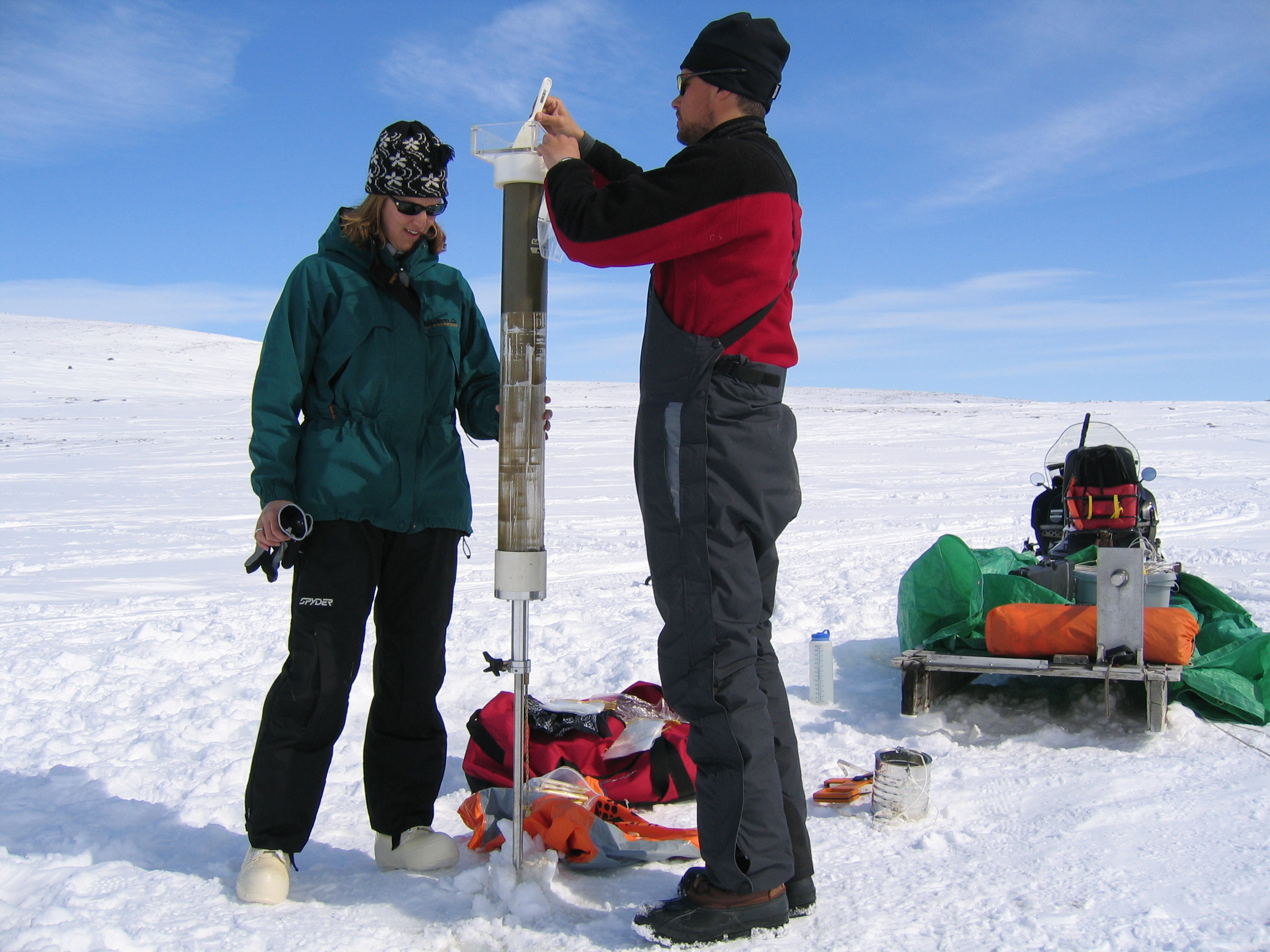 |
 |
 |
Links to media coverage related to this story:
Ottawa Citizen
Globe & Mail The
Independent
Daily Planet video
Quirks
and Quarks (interview near end)
Attention
broadcasters: Queen’s has facilities to
provide broadcast quality audio and video feeds. For television
interviews, we
can provide a live, real-time double ender from
October 15, 2009
Queen’s scientists on international team discover "ecologically unique" changes in Arctic lake
New study extends Greenland ice core record of climate change by 80,000 years
Kingston
, ON – Queen’s University biologists are part of an international research team whose discovery of a rare sediment core in a remote Arctic lake provides compelling evidence of unprecedented environmental changes occurring over the past few decades."Our findings show that the last several decades have been the most ecologically unique in 200,000 years," says Neal Michelutti, a research scientist at the Paleoecological Environmental Assessment and Research Lab (PEARL) at Queen’s. With Biology professor John Smol, Canada Research Chair in Environmental Change, and master’s student Cheryl Wilson, the Queen’s researchers are part of a multidisciplinary team led by University of Colorado scientist Yarrow Axford.
Other members of the team are from the University of Alberta, University of Buffalo and University of Massachusetts.
The sediment core, retrieved from a lake bottom on Baffin Island, predates by about 80,000 years the oldest cores from the Greenland Ice Sheet, capturing two ice ages as well as three interglacial periods. "Lake sediments are natural recorders of climate and environmental changes, as they preserve archives of past geochemical and physical conditions, as well as a diverse record of important biological indicators," Ms Wilson explains. The research team used algae and aquatic insect fossils preserved in the sediment core to reconstruct past climatic and other environmental conditions.
Their analyses show that changes in species, as well as lake-water chemistry, were tightly linked to past shifts in climate. The sediment records have allowed the team to reconstruct climatic and environmental conditions of the past three warm periods between the last two ice ages, and compare them to the human-influenced climate of today.
"The 20
th century is the only period during the past 200 millennia in which aquatic indicators reflect increased warming, despite the declining effect of slow changes in the tilt of the Earth’s axis which, under natural conditions, would lead to climatic cooling," notes the University of Colorado’s Dr. Axford.Such long lake records are extremely rare in glacial regions because the massive ice sheets during past ice ages typically scraped and scoured the underlying bedrock and removed previous sediment records, much like a huge bulldozer. The Baffin Island lake was spared this scouring due to the presence of what is known as cold-based ice, which is non-erosive and acts to preserve landscape features such as lakes and the sediments contained within their basins.
"Our results show that the ‘human footprint’ is overpowering long-standing natural processes, even in remote Arctic regions," says Dr. Smol, winner of the 2004 NSERC Herzberg Gold Medal as Canada’s top scientist. "This historical record shows that we are dramatically affecting the ecosystems on which we depend. We have started uncontrolled experiments on this planet, and we have entered unchartered territory. The situation is far worse than we thought and this is only the beginning."
PLEASE NOTE: A PDF copy of the study can be obtained from the Proceedings of the National Academy of Sciences, or contact Dr. John Smol at smolj@queensu.ca for a copy. High resolution images are available upon request.
Contacts:
Nancy Dorrance, 613.533.2869 nancy.dorrance@queensu.ca or Jeff Drake, 613.533.2877, jeff.drake@queensu.ca Queen’s News and Media Services
| Yarrow Axford Institute of Arctic and Alpine Research University of Colorado, Boulder, CO 80309 Boulder, CO 80309, Telephone: 303-492-7641 (I am away from phone between Oct. 19-26 but reachable by email) Yarrow.Axford@Colorado.EDU |
Jason P. Briner Geology Department, University at Buffalo, Buffalo, NY 14260 e-mail: jbriner@buffalo.edu Telephone: 716-645-4326. |
| Colin A. Cooke Department of Earth and Atmospheric Sciences, University of Alberta, Edmonton, AB, Canada T6G 2E3 |
Donna R. Francis Department of Geosciences, University of Massachusetts, Amherst, MA 01003 |
| Neal Michelutti Paleoecological Environmental Assessment and Research Lab (PEARL) Department of Biology, Queen's University 116 Barrie St., Kingston, ON, Canada K7L 3N6 Telephone: 613.533.6159 email: nm37@queensu.ca |
Gifford H. Miller Institute of Arctic and Alpine Research and Department of Geological Sciences, University of Colorado, Boulder, CO 80309
|
| John P. Smol Paleoecological Environmental Assessment and Research Lab (PEARL) Department of Biology, Queen's University 116 Barrie St. Kingston, ON, Canada, K7L 3N6 Telephone: 613-533-6147 e-mail: smolj@queensu.ca |
Elizabeth K. Thomas* Geology Department, University at Buffalo, Buffalo, NY 14260
|
| Cheryl R. Wilson* Paleoecological Environmental Assessment and Research Lab (PEARL) Department of Biology, Queen's University 116 Barrie St. Kingston, ON, Canada, K7L 3N6 *Currently a Graduate Student at Columbia University) |
Alexander P. Wolfe Department of Earth and Atmospheric Sciences, University of Alberta, Edmonton, AB, Canada T6G 2E3 http://faculty.eas.ualberta.ca/wolfe/ |

|